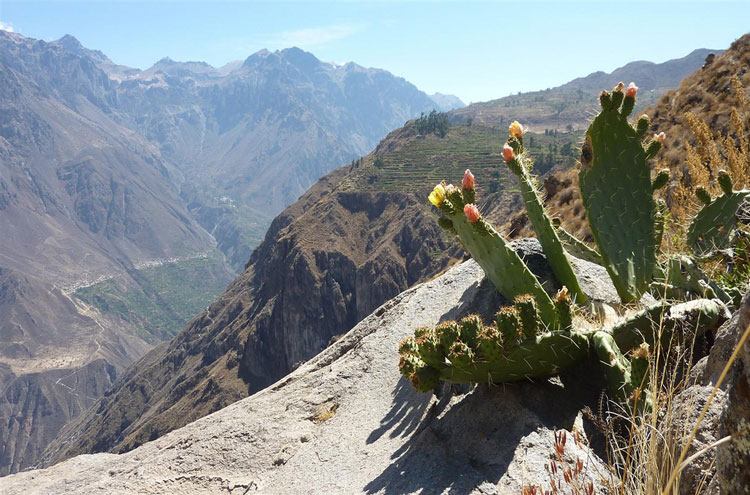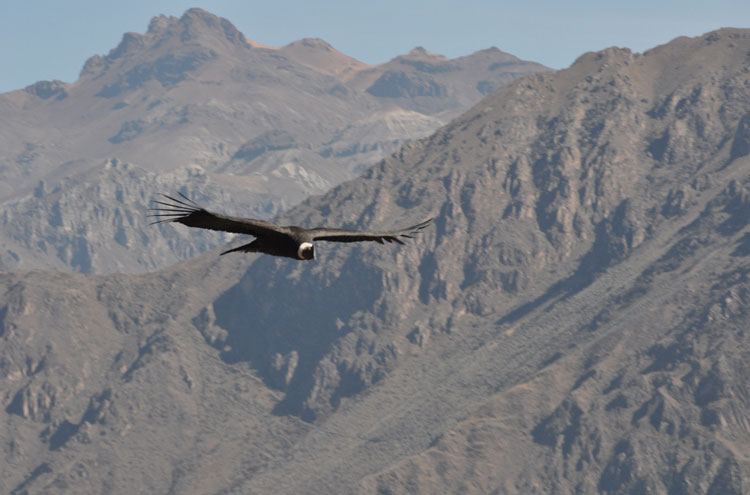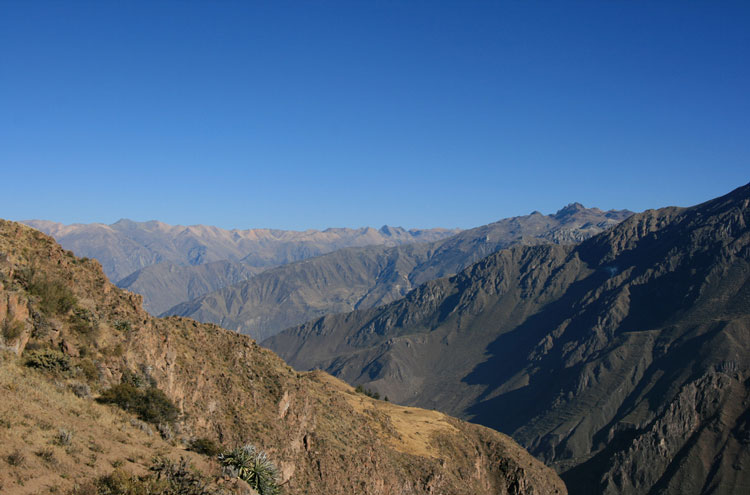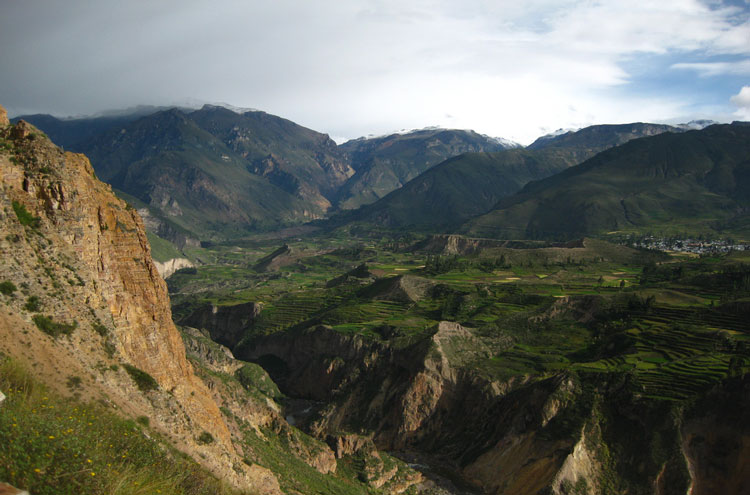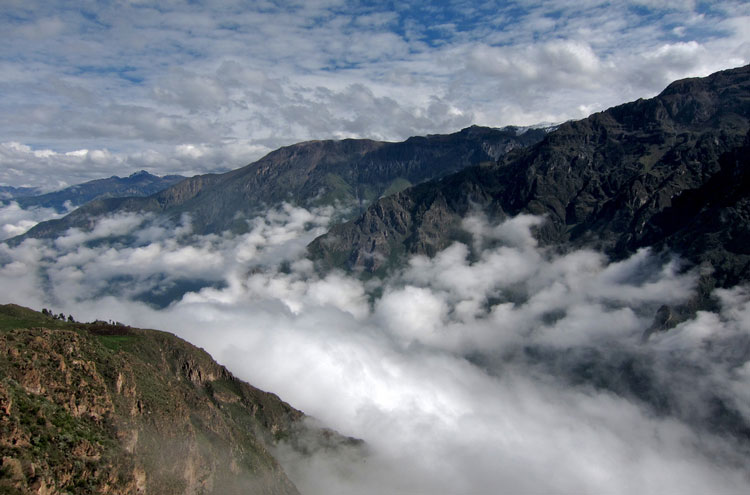Cotahuasi and Colca Canyons
Key information: Cotahuasi and Colca Canyons 
- The Arequipa region in southern Peru is host to some truly astounding geological and geographical formations, not least the Cotahuasi and Colca Canyons.
- These are claimed to be the two deepest canyons in the world, each over twice the depth of the USA's Grand Canyon and fine specimen of Arequipa's lava-sculpted topography.
- Independently stunning, the Colca is famed for the huge Andean condors flying high above it; Cotahuasi mixes glaciers with hot spas, juxtaposes millennia-old rock carvings and Spanish gold mines.
- With each canyon already over 3,000m deep, indomitable mountains can hoist this altitude to nearer 5,000m - and startlingly quickly. The altitude can become a real problem, so come prepared.
Walkopedia rating
- Walkopedia rating90
- Beauty34
- Natural interest17
- Human interest8
- Charisma34
- Negative points3
- Total rating90
- Note: Neg: altitude
Vital Statistics
- Length: Variable
- Maximum Altitude: up to 5,100m, depending on walk
- Level of Difficulty: Strenuous
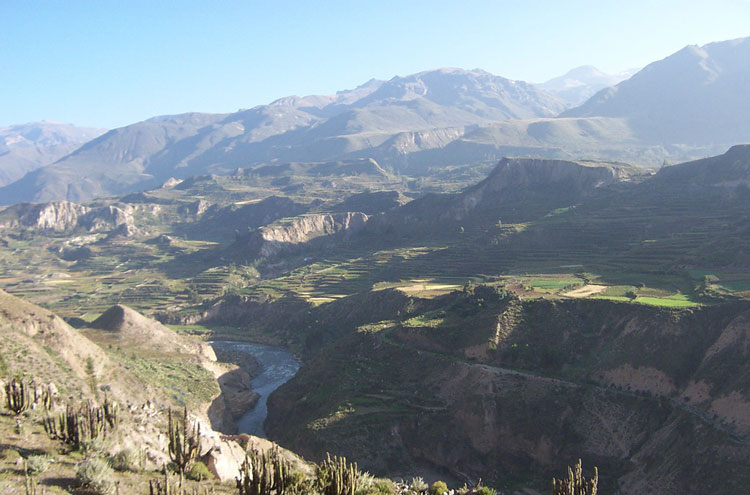
WALK SUMMARY
The Cotahuasi and Colca canyons incise deep tracks into Arequipa's arid, altitudinous plateau. They are claimed to be the two deepest canyons in the world, each over twice the depth of the USA's Grand Canyon (although much depends on how you measure canyon depth, a theological and partisan subject), with Cotahuasi having stolen the Colca's prestige in that regard only recently and amidst much wrangle and debate.
Volcanic activity from past millennia inscribes huge swathes of Peru's interior. Now, lava-sculpted plains lie high above the riverbeds, against a backdrop of Peru's Andean goliaths.
It is through these majestic interior pampas that the respective canyons cut, slicing down through the lava-moulded topography. Trekking down into these astounding canyons penetrates a dramatic, desert wilderness. Their dry, steep walls exhibit improbable Inca terracing in areas, scattering what might otherwise pass for moonscape with flashes of colour and history.
Pass amidst dazzling rivers and arid tracts of Andean desert, and through a host of microclimates; from lush, implausible oases in the deepest canyon, to snowfall brought on by the land's relief, much higher up.
Looming mountains abut and continue the canyons' precipitous walls, sending potential walking altitude careering upwards. Use these to get level with the huge Andean Condors riding thermals high above.
The Cotahuasi and Colca canyons are undoubtedly the most famous of the walks in Arequipa, and justifiably so. Yet the region is rich in wonder throughout:
Arequipa
Arequipa in southwestern Peru runs the whole gamut of pacific coastal resorts and port towns, through to the soaring Andean Peaks that make up South America's spine. Its diversity, therefore, inevitably gives rise to the fantastic and fantastical.
Rivers dissect the volcanic lava that moulded these plateaus, and many more canyons provide an incredible contrast to the heights of plateau and mountain. Volcanic cones puncture the skyline, geysers punctuate its scale and serenity.
Along Arequipa's pacific border, smaller plateaus and dunes dot microcosms of their grand inland cousins onto the regions coastline.
In the province of Castilla, by the town of Corire, is Toro Muerto: 3,000 petroglyphs chronicle Perus human heritage. Near Andaguas: the Valley of Volcanoes, with almost 100 dramatic cones dominating the landscape.
Other accounts: share your experiences
Your comments on this walk, your experiences and suggestions, and your photos are very welcome. Where appropriate, you will be credited for your contribution.
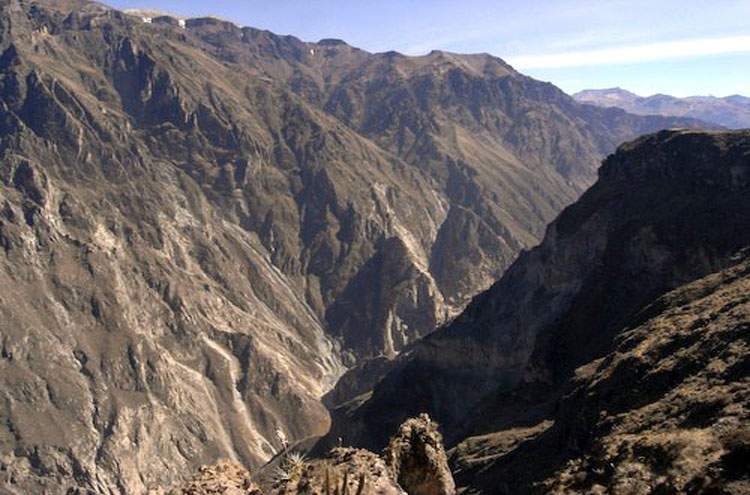
We have a lot of helpful practical information and tips about this walk, covering everything from the best books and maps, to timing and weather, geting there, possible problems, whether you need a guide and where to find them, and useful websites. This section is only open to members.
Membership is FREE AND JOINING TAKES 30 SECONDS. To login or sign up click here
Safety and problems: All walks have inherent risks and potential problems, and many of the walks featured on this website involve significant risks, dangers and problems. Problems of any sort can arise on any walk. This website does not purport to identify any (or all) actual or potential risks, dangers and problems that may relate to any particular walk.
Any person who is considering undertaking this walk should do careful research and make their own assessment of the risks, dangers and possible problems involved. They should also go to “Important information” for further important information.
Anyone planning an expedition to this place should see further important information about this walk.
Safety and problems: All walks have inherent risks and potential problems, and many of the walks featured on this website involve significant risks, dangers and problems. Problems of any sort can arise on any walk. This website does not purport to identify any (or all) actual or potential risks, dangers and problems that may relate to any particular walk.
Any person who is considering undertaking this walk should do careful research and make their own assessment of the risks, dangers and possible problems involved. They should also go to “Important information” for further important information.
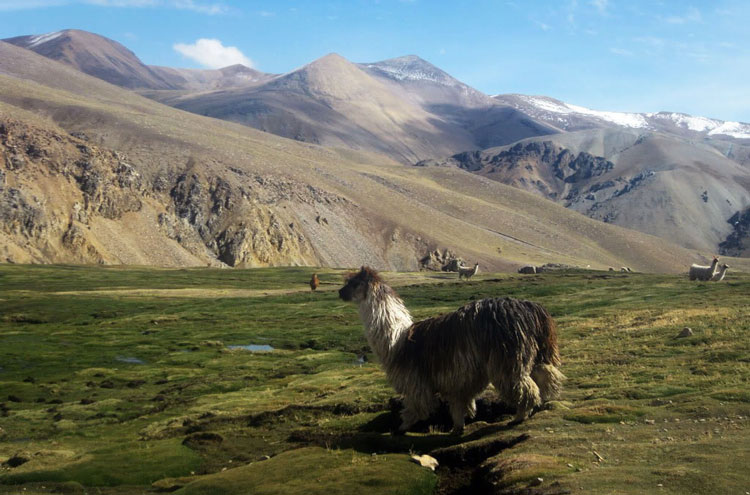
OTHER ACCOUNTS
share your experiences
Add your experiences, suggestions and photos. We would be delighted to receive your writing and ideas (which will be attributed appropriately where published).
Anyone planning an expedition to this place should see further important information about this walk.
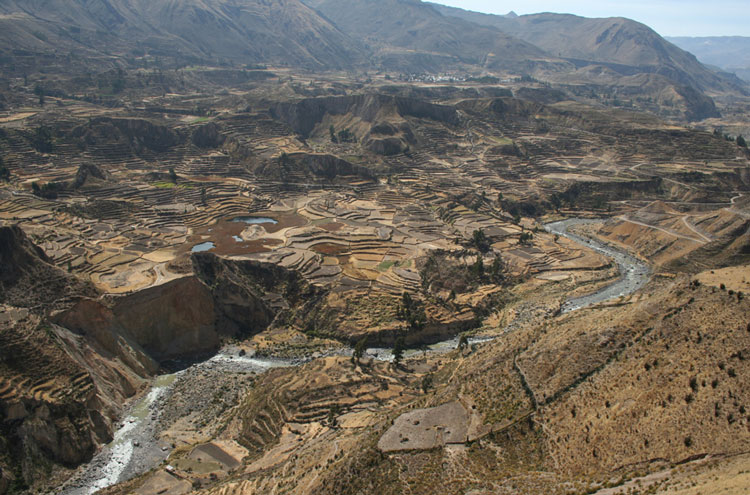
Responsible travel matters, a lot. How you travel will make a real difference - for better or worse. PLEASE consider this when making plans. Read more



